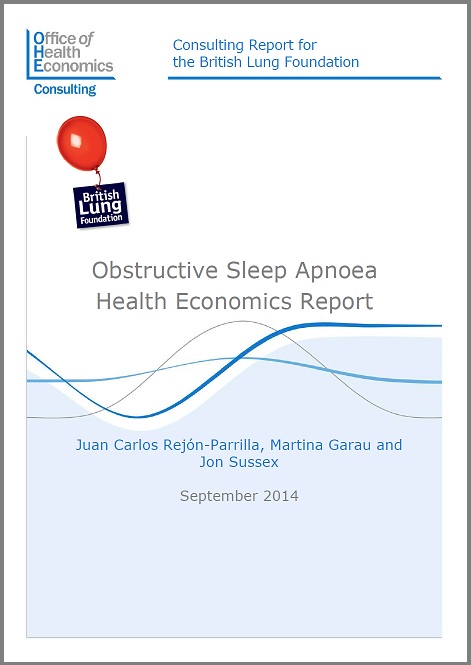Sign up to our newsletter Subscribe
Analysing Global Immunisation Expenditure

Obstructive sleep apnoea (OSA) is the temporary cessation of breathing during sleep because of a narrowing or closure of the pharyngeal airway. Untreated OSA can result in daytime sleepiness that affects cognitive function, mood and quality of life and can increase the risks of road traffic, work-related accidents and cardiovascular disease and strokes.
Obstructive sleep apnoea (OSA) is the temporary cessation of breathing during sleep because of a narrowing or closure of the pharyngeal airway. Untreated OSA can result in daytime sleepiness that affects cognitive function, mood and quality of life and can increase the risks of road traffic, work-related accidents and cardiovascular disease and strokes.
Currently, an estimated 1.8 million people in the UK are living with OSA. Risk factors for developing it are gender (more likely in men), age (more likely in older people), diabetes, hypertension and obesity. These risk factors are expected to increase in prevalence, most likely producing a consequent increase in the costs of OSA as well.
Treatment for OSA varies with disease severity. In 2008, NICE assessed three interventions and recommended the use of CPAP machines for adults with moderate or severe OAS, but recommend use in milder cases only if other options had failed or were inappropriate. NICE estimated the cost of treating OSA with CPAP at £5,000 per QALY, well below its ICER of £20,000–£30,000. Other research has found that oral devices are preferred by some patients—particularly those with milder disease—and, while less cost-effective than CPAP machines, are cost effective compared to no treatment.
Despite the clear evidence of benefit, the report notes that recent research estimates that about 85% of OSA cases currently are undiagnosed and untreated in the UK. In this report, OHE Consulting calculates the direct savings that could be realised if more cases were treated.
Rejon-Parrilla, J.C., Garau, M. and Sussex, J.
(2014) Obstructive Sleep Apnoea: Health Economics Report. OHE Contract Research. Available from https://www.ohe.org/publications/obstructive-sleep-apnoea-health-economics-report/